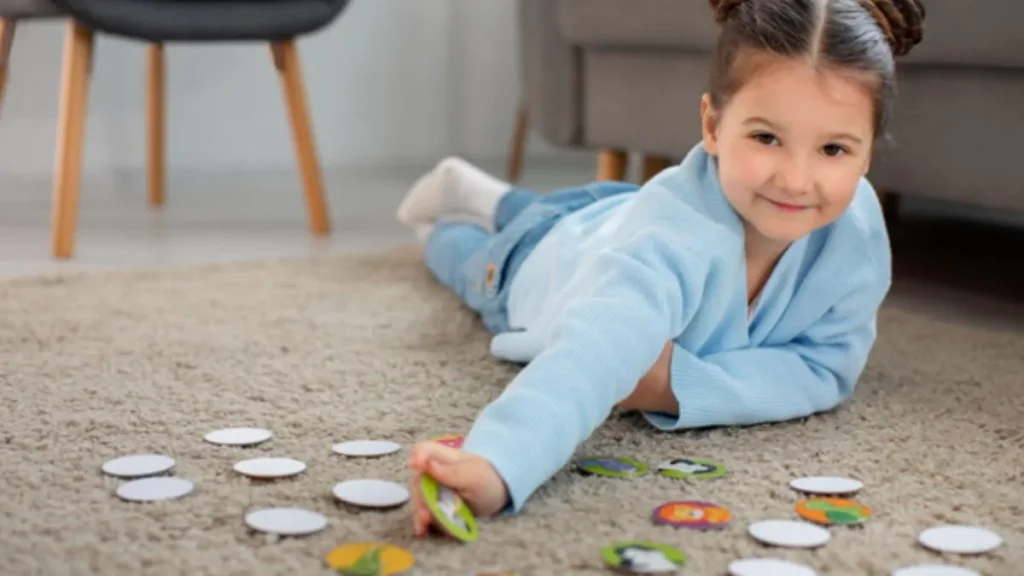In the dynamic and fast-paced world of child development, parents are constantly seeking innovative ways to foster a Safety and stimulating environment for their little ones. One such indispensable tool that has gained immense popularity in recent years is the play mat. These versatile and colorful mats go beyond providing a soft surface for babies to crawl or play on; they play a pivotal role in enhancing various aspects of a child’s development.
In this article, we will delve into the multifaceted benefits of play mats and explore how they contribute to a child’s physical, cognitive, and social growth.
Contents
Safety First: Creating a Secure Play Space
The primary concern for any parent is ensuring the safety of their child. Playmats serve as a reliable and padded surface, creating a secure area for babies and toddlers to explore their surroundings. Constructed from non-toxic materials, these mats are designed to provide a cushioned barrier between the child and the often hard or uneven surfaces found in homes. With their shock-absorbing properties, play mats reduce the impact of falls, protecting delicate bones and joints during the crucial stages of development.
Cognitive Development: Engaging the Senses
Beyond safety, play mats are instrumental in stimulating a child’s cognitive development. Many modern play mats are equipped with vibrant colors, contrasting patterns, and tactile elements that engage a child’s senses. These visual and tactile stimuli help in developing sensory perception and cognitive processing. As babies explore the textures and colors on the mat, their brains are actively making connections, laying the foundation for future cognitive abilities.
Furthermore, some play mats for babies come with built-in toys, mirrors, and interactive elements that encourage exploration and discovery. These features not only entertain but also foster cognitive skills such as problem-solving, object permanence, and cause-and-effect relationships.
Motor Skills: From Tummy Time to Toddlerhood
Playmats play a crucial role in promoting the development of both fine and gross motor skills. During the early months, tummy time on a play mat strengthens the neck and upper body muscles, laying the groundwork for essential motor skills like crawling and eventually walking. The soft and supportive surface of the mat allows babies to push up, roll over, and eventually sit up with confidence.
As children grow into toddlers, play mats continue to support motor skill development. The cushioned surface provides a comfortable space for activities like crawling, standing, and walking, promoting balance and coordination. Some play mats even feature puzzles and mazes encouraging toddlers to navigate and develop spatial awareness.
Social Development: Play Mats as Gathering Spaces
Playmats are not just individual play areas; they can also serve as communal spaces for social interaction. Playdates become more enjoyable when children can gather on a soft, colorful surface that sparks their imagination. Sharing toys, engaging in parallel play, and even collaborative activities become more appealing when set against the backdrop of a comfortable and inviting play mat.
Additionally, group play on mats can contribute to the development of social skills such as sharing, taking turns, and cooperation. These early social interactions lay the foundation for healthy interpersonal relationships as children grow older.
Encouraging Social Interaction:
The generous size of an 8×10 rug for kids makes it an excellent space for social interaction among toddlers. Whether siblings, friends, or playmates from a daycare setting, these mats provide a communal area for children to engage in cooperative play. The shared space encourages social skills such as sharing, taking turns, and cooperation, essential building blocks for healthy social development.
Additionally, the interactive designs on some play mats facilitate group activities and games, further promoting social interaction. Toddlers can work together to solve puzzles, point out shapes, or even create imaginative scenarios using the visuals on the mat. This collaborative play enhances communication skills and helps children develop friendships through shared experiences.
Educational Opportunities: Learning Through Play
Incorporating educational elements into play mats adds an extra dimension to a child’s learning experience. Many play mats feature numbers, letters, shapes, and animal illustrations, turning the play area into an interactive learning environment. As children engage with these educational components, they absorb foundational knowledge playfully and enjoyably.
Moreover, parents can use play mats as a tool for early language development. Pointing to pictures, naming objects, and encouraging verbal communication during playtime on the mat contribute to language acquisition and vocabulary expansion.
Conclusion
In the intricate tapestry of child development, play mats emerge as a vital thread, weaving together safety, cognitive stimulation, motor skill development, social interaction, and educational enrichment. Parents seeking a holistic approach to nurturing their child’s growth find in play mats a versatile and indispensable tool. As these mats continue to evolve with innovative features and designs, they remain an enduring symbol of safe and fun childhood experiences, laying the foundation for a lifetime of learning and exploration.











